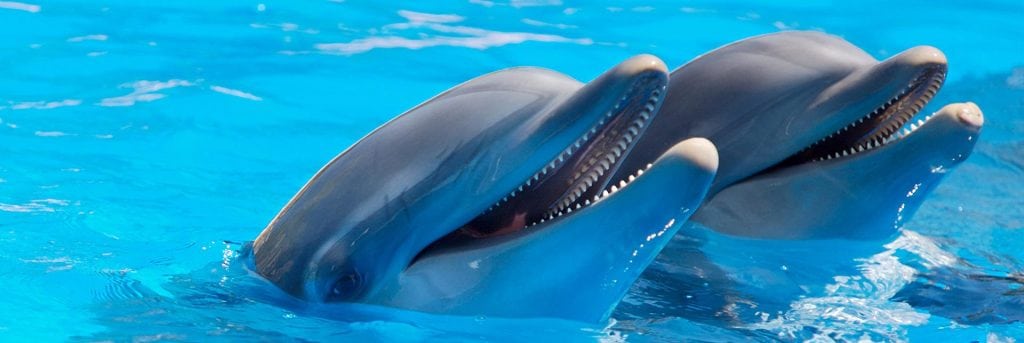Dolphins are carnivores. Fish, squid and crustaceans are included in their list of prey. A 260-pound dolphin eats about 33 pounds of fish a day. Known for their playful behavior, dolphins are highly intelligent. They are as smart as apes, and the evolution of their larger brains is surprisingly similar to humans.
Dolphins are part of the family of whales that includes orcas and pilot whales. Killer whales are actually dolphins. Dolphins are very social, living in groups that hunt and even play together. Large pods of dolphins can have 1,000 members or more.
Depending on the species, gestation takes nine to 17 months. After birth, dolphins are surprisingly maternal. They have been observed nestling and cuddling their young.

A dolphin calf nurses for up to two years. Calves stay with the mothers anywhere from three to eight years. Dolphins have acute eyesight both in and out of the water. They hear frequencies 10 times the upper limit of adult humans. Their sense of touch is well-developed, but they have no sense of smell.
Dolphins have few natural enemies. Humans are their main threat. Pollution, fishing and hunting mean some dolphin species have an uncertain future. In 2006, the Yangtze River dolphin was named functionally extinct.
Because dolphins are mammals, they need to come to the surface of the water to breathe. Unlike land mammals that breathe and eat through their mouths, dolphins have separate holes for each task. Dolphins eat through their mouths and breathe through their blowholes. This prevents the dolphin from sucking up water into the lungs when hunting, reducing the risk of drowning.














